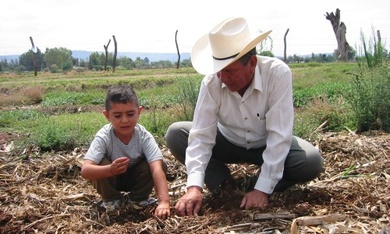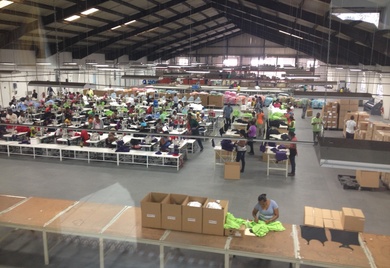
The top 10 developing nations investing in clean energy
By: Agustín Cáceres The history of investing in clean energy in developed countries like Denmark, Spain or Germany is well known: big investments, subsidies, and an energy matrix that is much greener than that of other developed nations likes the US or Japan. However, developing nations represent a large and rapidly growing share of the world’s clean energy investment, according to Climatescope 2014, a country-by-country assessment, interactive report and index that offers the clearest picture yet of clean energy in 55 emerging markets in Africa, Asia, and Latin America and the Caribbean.

Can Latin American firms succeed in China?
By Theodore Kahn* Are there opportunities for Latin American firms in China beyond iron ore, soy beans, copper, and a handful of other commodities? This question has been on the mind of policymakers in the region ever since LAC-China trade took off in the early 2000s, driven by China’s strong demand for natural resources traditionally provided by Latin America and the Caribbean (LAC).

What is one of the most important factors in securing the future of family business in Latin America?
* By Rebeca White Sanchez, Operations Senior Specialist IIC, and Helga Flores, Principal IIC External Relations Advisor Corporate Governance has become a buzz term in the last decade. Why do we talk about it so much? A study performed by corporate governance experts Ira Millstein and Paul MacAvoy found that companies rated A+ in governance earned an average of 25% more than F-rated companies. So, is your family business leaving money on the table? Let’s focus on how governance translates into tangible benefits for your small or medium-sized family enterprise.

China Insights Program: Do you speak the Chinese business language?
Chinese business opportunities for Latin America and the Caribbean * by Gema Sacristán (Versión en español) Imagine for a second that you spend your free time designing clothes and you want to export to China. Where do you start? When I first asked myself this question, I had no idea. I realized how much we in the region talk about Chinese business opportunities for Latin America and the Caribbean (LAC) but how little we actually know.

Four ways technology and data facilitate SME finance in Latin America & the Caribbean
* By Greg Da Re Technology, particularly the Internet, allows SMEs to share experiences, connect to different networks and operate in a world without the limitation of geographical barriers. Social networks are increasingly important for companies to position their brands. Social media in Latin America will near 300 million users by 2017. Technology can allow SMEs to increase their competitiveness and facilitate new ways to access financing.

Approaching infrastructure from all angles: sustainable opportunities in Latin America and the Caribbean
“Please see if it is feasible to create these roads so that they will pay for themselves,” famously declared Franklin Delano Roosevelt, the United States’ 32nd president. In Latin America and the Caribbean, such a boundless, timeless statement holds true for the majority of today’s infrastructure projects. An IDB study recently affirmed that investments in infrastructure provide financial returns upwards of 70 percent. But in the region and across the globe, the goal of infrastructure should not only be financial profitability. Given the long life of infrastructure assets and their importance for country competitiveness, the social and environmental rationale for high-quality, reliable and sustainably constructed infrastructure is equally captivating.